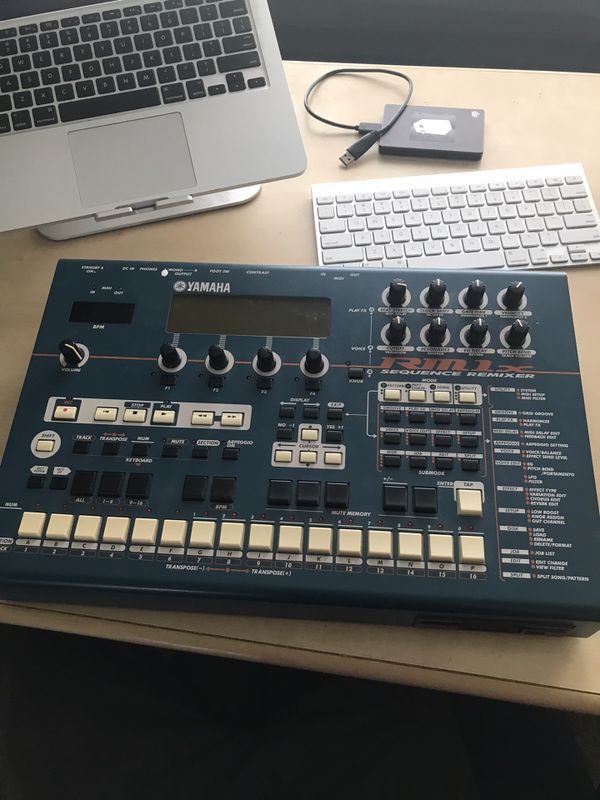

- #Usamo vs multiclock drivers#
- #Usamo vs multiclock driver#
- #Usamo vs multiclock full#
- #Usamo vs multiclock Pc#
- #Usamo vs multiclock windows#
No matter how hard you try an external metal box with multiple inputs and outputs will always be better than a PCI/PCIe card inside a PC for recording. People who want high quality recording shifted to firewire and later high-speed USB external audio interfaces. The reasons sound cards went away is the use cases went away:ġ.
#Usamo vs multiclock windows#
Very, very, few people have their PCs connected to an AV receiver or multichannel speakers, but positional audio is still widely supported in Windows applications using Xaudio2. Modern CPUs can ether do or emulate this, probably using less power than a sound card.
#Usamo vs multiclock full#
>Gone are the days of 3D audio chips, or having sound cards full of synthethizers that could create new audio on the fly. All this died and in a sense also affected video development, some features that video cards were getting at the time were removed and hardware design moved to a narrower path, more compatible with MS rules.Īs for what the restrictions have to do with DRM: the point was not allow people to intercept audio and video using analog signals with perfect quality, since this would be an easy way to go around the DRM built-in on HDMI cables. Yamaha still manufactures sound card chips, and their current ones have way less features than the ones that they made during the sound card era.ĮDIT: also forgot to point out the same restrictions kinda killed analog video too, for example before the restrictions nothing prevented people from sending arbitrary data to analog monitors, so you could have monitors with non-standard resolutions, non-square pixels, unusual bit depths (for example SGI made some monitors that happily accepted 48 bits of color) or not even having pixels at all (think vectrex) and so on.

Gone are the days of 3D audio chips, or having sound cards full of synthethizers that could create new audio on the fly.
#Usamo vs multiclock drivers#
When DVDs and HDMI were becoming popular, and Windows Vista was launched, a lot of restrictions were put on drivers, I saw many people defending them claiming it was for better stability, avoiding blue screens and so on.īut a major thing the restrictions did, was restrain several of the sound cards features, most notably their 3D audio calculations that were then just starting to take off, people were making 3D audio APIs that intentionally mirrored 3D graphics API with the idea you would have both a GPU and a 3D audio processor, and you would have games where the audio was calculated with reflections, refractions and diffractions.Īfter that, the only use of sound cards became what the drivers still allowed you to do, that was mostly play sampled audio, so sound cards became kinda pointless.

When I can't avoid it, I use an ERM Multiclock.The main reason for their death in my opinion, is the DRM-driven (although MS claim it wasn't because of DRM) changes to Windows drivers rules. MIDI timing issues have become the main reason I try to avoid MIDI sync at all costs, and never sync via MIDI to my DAW.

Or ditch the Hydrasynth sequencer and do all the sequencing in the DAW.or ditch the DAW itself if you can. The solution is to make the Hydrasynth the master clock, or to get an master clocking device that can feed your Hydrasynth a more steady clock (like the Roland SBX-1 or ERM products).
#Usamo vs multiclock driver#
(I like to think it's the main driver of the DAW-less revolution.) It's most noticeable with Computers, not as much with dedicated sequencers. It is why analog synth fanboys will correctly claim that MIDI timing sucks - and it really does. The differences are small, but they really add up to the point where you can totally hear the difference. it turns into random mush.)ĭAWs have a terrible time with MIDI clock because the computer itself is using clocks to run its own hardware and software, and its internal timing stream conflicts with the MIDI clock time-wise. It's easy to hear - just try programming a fast drum roll on your drum machine and synching it to your DAW and see what happens. (I'm guessing it's from a PC - the worst offenders) The clocks are competing and the slave loses, (It's why you can't sync a drum machine to a DAW and keep it in steady time. It's most likely happening because you are clocking the Hydrasynth with an external clock and the Hydras sequencer is trying to keep up with the tiny changes in tempo from the clock it's being fed. You didn't say what you're using to clock the Hydrasynth.


 0 kommentar(er)
0 kommentar(er)
